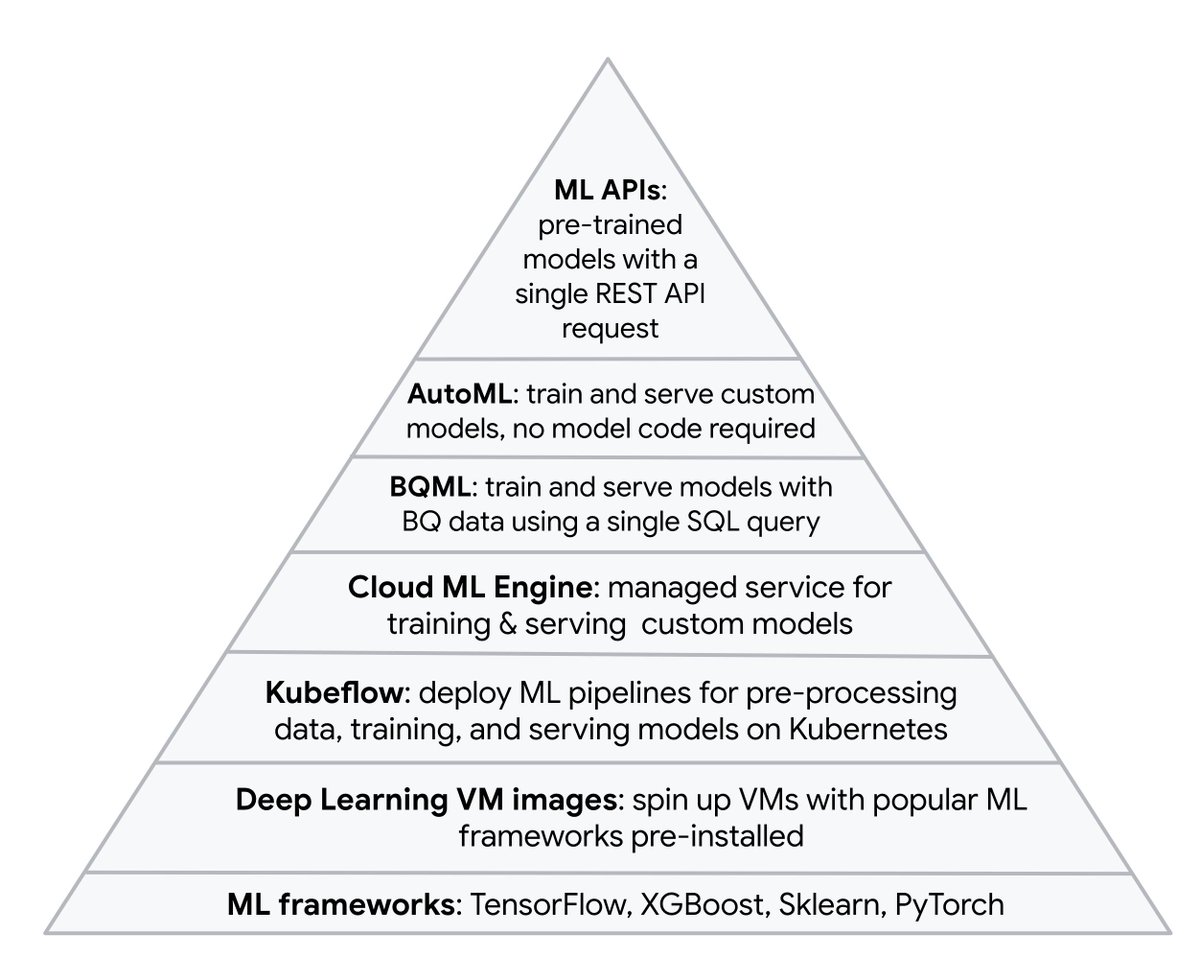Difference between revisions of "Google"
m |
m |
||
| Line 26: | Line 26: | ||
** [[TensorBoard]] ...TensorFlow's visualization toolkit | ** [[TensorBoard]] ...TensorFlow's visualization toolkit | ||
** [https://www.tensorflow.org/hub TensorFlow Hub] is a library for reusable machine learning modules that you can use to speed up the process of training your model. A [[TensorFlow]] module is a reusable piece of a [[TensorFlow]] graph. With transfer learning, you can use [[TensorFlow]] modules to preprocess input feature vectors, or you can incorporate a [[TensorFlow]] module into your model as a trainable layer. This can help you train your model faster, using a smaller dataset, while improving generalization. | ** [https://www.tensorflow.org/hub TensorFlow Hub] is a library for reusable machine learning modules that you can use to speed up the process of training your model. A [[TensorFlow]] module is a reusable piece of a [[TensorFlow]] graph. With transfer learning, you can use [[TensorFlow]] modules to preprocess input feature vectors, or you can incorporate a [[TensorFlow]] module into your model as a trainable layer. This can help you train your model faster, using a smaller dataset, while improving generalization. | ||
| − | * [[Generative AI]] ... [[OpenAI]]'s [[ChatGPT]] ... [[Perplexity]] ... [[Microsoft]]'s [[ | + | * [[Generative AI]] ... [[OpenAI]]'s [[ChatGPT]] ... [[Perplexity]] ... [[Microsoft]]'s [[Bing]] ... [[You]] ...[[Google]]'s [[Bard]] ... [[Baidu]]'s [[Ernie]] |
* [[Natural Language Processing (NLP)|Natural Language]]: | * [[Natural Language Processing (NLP)|Natural Language]]: | ||
** [https://blog.google/technology/ai/lamda/ LaMDA (Language Model for Dialogue Applications): our breakthrough conversation technology | ] [[Google]] | ** [https://blog.google/technology/ai/lamda/ LaMDA (Language Model for Dialogue Applications): our breakthrough conversation technology | ] [[Google]] | ||
Revision as of 20:29, 30 March 2023
YouTube ... Quora ...Google search ...Google News ...Bing News
- Google's Tools and Resources
- Gato
- Chat
- Platforms: AI/Machine Learning as a Service (AIaaS/MLaaS)
- Colaboratory (Colab) - Jupyter notebooks
- Hands-on labs
- Google Cloud
- Google Cloud Platform Marketplace
- Google Cloud Code and Google Kubernetes Engine (GKE)
- Pixel phone with TPU - Tensor Processing Unit / AI Chip
- TensorFlow
- TensorBoard ...TensorFlow's visualization toolkit
- TensorFlow Hub is a library for reusable machine learning modules that you can use to speed up the process of training your model. A TensorFlow module is a reusable piece of a TensorFlow graph. With transfer learning, you can use TensorFlow modules to preprocess input feature vectors, or you can incorporate a TensorFlow module into your model as a trainable layer. This can help you train your model faster, using a smaller dataset, while improving generalization.
- Generative AI ... OpenAI's ChatGPT ... Perplexity ... Microsoft's Bing ... You ...Google's Bard ... Baidu's Ernie
- Natural Language:
- LaMDA (Language Model for Dialogue Applications): our breakthrough conversation technology | Google
- Language Interpretability Tool (LIT) | Google - GitHub
- Google Natural Language
- Google Semantic Reactor
- Bidirectional Encoder Representations from Transformers (BERT)
- Gboard on Pixel phones now uses an on-device neural network for [[Speech Recognition| speech recognition] | Kyle Wiggers - VentureBeat
- Universal Sentence Encoder lite a model that encodes text into 512-dimensional embeddings. These embeddings can then be used as inputs to natural language processing tasks such as sentiment classification and textual similarity analysis. This module is a TensorFlow.js
- AI Platform
- AI Hub - explore and use a variety of AI asset categories. AI Hub offers a collection of components for developers and data scientists building artificial intelligence (AI) systems. Use AI Hub to: [1] Find, deploy, and use Kubeflow Pipelines and components, [2] explore code and learn in interactive Jupyter notebooks, [3] explore and reuse TensorFlow modules, Explore, deploy, and use trained models, [4] use prepackaged virtual machine (VM) images to quickly set up your AI environment, and [5] share AI components with your colleagues.
- Kubeflow Pipelines ML workflows on Kubernetes
- Google AutoML
- Cloud Vision
- Cloud Vision API - drag & drop picture on webpage
- Automated Learning
- We’re making tools and resources available so that anyone can use technology to solve problems | Google AI
- Dopamine - reinforcement learning algorithms
- Google AI Experiments
- ML Engine
- Prediction API
- Grow with Google
- Learn from ML experts at Google
- Google Internet of Things (IoT)
- Psychlab ...testing virtual agents in 3D environments
- Deep Reinforcement Learning (DRL) ...Importance Weighted Actor-Learner Architecture (IMPALA)
- Google AIY Projects Program ... connect Vision or Voice Kit to a Wi-Fi network right from mobile device
- Android Neural Networks API ...machine learning on Android devices
- Big\Table ...designed with a storage engine for machine learning applications leading to better predictions
- Pub/Sub ...messaging and ingestion for event-driven systems and streaming analytics.
- BiqQuery ML (BQML) ...enables users to create and execute machine learning models in BigQuery by using standard SQL queries.
- Firebase ...mobile and web functionality like analytics, databases, messaging and crash reporting
- DialogFlow ...creating conversational AI applications, including chatbots, voicebots, and IVR bots
- Google Analytics ...measure your web traffic
- Teachable Machine ...train a computer to recognize your own images, sounds, & poses
- Google Coral ...toolkit to build products with local AI. Our on-device inferencing capabilities
- Google Sheets ...access, create, and edit your spreadsheets wherever you go — from your phone, tablet, or computer
- Google Facets ...contains two robust visualizations to aid in understanding and analyzing machine learning datasets
- DeepMind - Open Source
- People + AI Research (PAIR) ... devoted to advancing the research and design of people-centric AI systems.
|
|
The Path From Cloud AutoML to Custom Model (Cloud Next '19)
by Sara Robinson

|
|